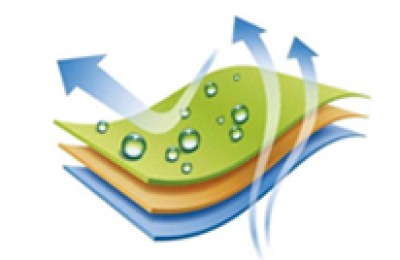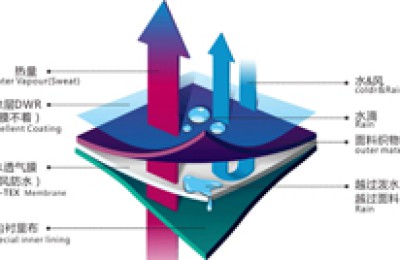How will textile raw materials perform next year?
Abstract: 2016 was a difficult year for the fabric industry. Due to the adjustment of the cotton reserve policy, cotton prices continued to rise and prices continued to rise. Although there were price drops in the middle, the overall strength continued and cotton prices continued to rise. It has driven up the price of other fabric raw materials, and viscose, polyester, nylon and other fabric raw materials have also continued to rise. In addition, the arrival of the G20 summit and strong environmental protection measures have made the prices of chemical fiber raw materials remain high
2016 was a difficult year for the fabric industry. Due to the adjustment of the cotton reserve policy, cotton prices continued to rise, and prices continued to rise. Although prices have fallen, the overall trend continues to strengthen. The continued rise in cotton prices has driven up the prices of other fabric raw materials. Fabric raw materials such as viscose, polyester, and nylon have also continued to rise. Coupled with the arrival of the G20 summit and strong environmental protection measures, the prices have also increased. The price of chemical fiber raw materials remains high.
From the perspective of the entire fabric industry, December has entered the off-season for demand, and the market will rise first and then fall. The fabric index is estimated to be 870 points high and 840 points low. According to monitoring, the chemical fiber sector rose overall in November. The spot price of PTA at the end of November was 4,959 yuan/ton, a monthly increase of 3.38%, and PTA futures once soared to 5,360 yuan/ton; the price of domestic ethylene glycol market has increased by more than 18% since October. Polyester filament yarn prices continued to rise, supported by the surge in prices of upstream PTA and ethylene glycol, reaching a new annual high. 2016 is about to end. Regarding the fabric market in 2017, how will the cotton and viscose market be interpreted?
Cotton supply and demand are “tightly balanced”
Cotton prices rose steadily in November, once exceeding a high of 16,021 yuan/ton. Recently, the domestic cotton market has finally stabilized. As of the 19th, the “Double 29” and “Double 30” prices for spot platform delivery in Xinjiang were 16,000-16,200 yuan/ton, and some actual transaction prices are negotiable. The delivery price of machine-picked cotton at the platform in Xinjiang is “Double 28” at 15,500-15,600 yuan/ton. In particular, the recent disbursement of subsidies for cotton exports from Xinjiang has brought good news to cotton exports from Xinjiang. As of the 19th, the price of 3128-grade large bales of cotton in the Yellow River Basin and Yangtze River Basin was 15,700-15,800 yuan/ton, and the price of small bales was 14,500-15,300 yuan/ton. The market fluctuated slightly and was overall stable.
Judging from the survey, the current mentality of cotton enterprises in Xinjiang is quite different. Some ginners are stepping up sales and striving to achieve “double knot zero” by the end of February 2017; Ginning plants are holding tight to the cotton resources of “Double 28”, “Double 2”, and “Double 30” (including machine-picked cotton). They are not enthusiastic about moving warehouses to the mainland in the short term and offering quotations for sale. They are waiting for the domestic supply after March 2017. The opportunity has arrived for cotton prices to “do nothing but skyrocket”. Regarding cotton prices in 2016/17, some institutions and cotton companies believe that the probability of exceeding 17,000 yuan/ton and 18,000 yuan/ton is relatively high. Before the Spring Festival, cotton prices are consolidating and bottoming out, and the market will follow the March 6, 2017 The cotton reserves are coming out and starting an upward attack. Cotton, polyester staple fiber and other raw materials will drive the entire fabric and workwear industry chain forward.
Judging from feedback from relevant government departments, research institutions and enterprises, it is a consensus that domestic cotton supply and demand will be “tightly balanced” in 2016/17, but to what extent is it “tight”? How to calculate the balancing account of Chinese cotton? For supply, a relatively simple estimate:
1. Output: Everyone has a good idea. This is because with the progress of cotton purchase, sorting and public inspection, the error in the estimation of domestic cotton output in 2016 is getting smaller and smaller, 470 The production range of -4.8 million tons has also been gradually recognized and used by the industry.
2. Import: There is no need to speculate on the cotton import quota in 2017. There is only 894,000 tons of 1% tariff quota. The expectation of consolidation of trade and sliding tariff quotas has been shattered. Even with large imports Calculated by volume, the total foreign cotton imports in 2016/17 will not exceed 1.2 million tons (from January to October 2016, my country imported a total of 696,300 tons of cotton, of which 41,300 tons were imported in October. Therefore, as of the end of September, the remaining 2016 The quota is about 300,000 tons).
3. Cotton reserve rotation: According to announcements from the National Development and Reform Commission and the Ministry of Finance, no reserve cotton rotation will be arranged during the launch of new cotton this year (until the end of February next year). The reserve cotton rotation in 2017 Sales will start on March 6, and the deadline is tentatively set at the end of August. The daily listed sales volume is temporarily arranged at 30,000 tons. Considering that unsold sales may occur in the early stage, if the daily transaction volume is 20,000 tons, it is estimated that The amount of transacted resources is about 2.5-2.6 million tons (the unsold rate is estimated to be less than 35%), then the total available supply is 470+120+2.50=8.4 million tons.
Domestic cotton supply may exceed demand by 500,000-600,000 tons in 2016/17 (��The reserve cotton auction is hot, and the transaction volume may reach 3 million tons, then the supply exceeds the demand by nearly 1 million tons), but considering the low quality and spinnability of real estate cotton this year; the overall fracture ratio strength of hand-picked cotton in southern Xinjiang, The performance of length and horse value is unsatisfactory and the quality of cotton coming out of reserve is uncertain. Therefore, high-grade and high-quality Xinjiang cotton may have a chance to rebound after May.
The viscose industry is prone to rise but difficult to fall under existing production conditions
As a cotton-based chemical fiber material and regenerated cellulose fiber, viscose staple fiber has experienced rapid growth in value in recent years. There was even talk of sticky shorts replacing cotton. Industry insiders boldly predict: During 2020-2021, China’s viscose staple fiber output will exceed China’s cotton! So, will viscose staple fiber replace cotton? How will the short-term market conditions be interpreted in 2017?
As the gathering place of my country’s spinning industry, Shandong is also a lively area for cotton and cotton yarn trade. The core lies in the semi-finished finishing and manufacturing of the fabric industry chain, linking upstream and downstream. The industry has matured and local Fiber companies mainly produce conventional products, with annual output of black silk, fireproofing and other products ranging from 10,000 to 20,000 tons. Each company said that the actual inventory is not large, and the spot supply is relatively tight. There will be periodic adjustments due to factors such as relatively high downstream demand, funds, and prices at the end of the year. However, due to rising costs, growing demand, cotton is easy to rise but difficult to fall, etc. Against this background, the market situation in 2017 is relatively optimistic. The trajectory of history tells us that all progress must be regular. Let’s first take a look at the trend of viscose staple fiber in the past four years. In fact, the price of viscose staple fiber has been declining instead of rising every October. This is mainly due to the characteristics of viscose staple fiber. Since the fabrics woven from viscose staple fibers are mostly cool, such as rayon, bamboo fiber, and modal fabrics, they are mostly used in downstream procurement to make spring and summer clothing. Therefore, when the market enters the sales season for medium-thick fabrics, the market demand for viscose staple fiber as a raw material is not as good as before, which to a certain extent drags down its price trend.
Everyone is concerned about the relationship between viscose and cotton. Looking back on the past 10 or 20 years, the price trends of cotton and viscose have been particularly close, but the production capacity of cotton has stopped growing. If Everyone needs more comfortable fibers that have properties close to those of cotton. There is no doubt that viscose is a good choice. From 2005 to 2010, the price of viscose staple fiber has been higher than the price of cotton. However, after the national purchase and storage policy began, the price of viscose staple fiber has been declining, but the price of cotton has always remained at a high position. Recently Everyone is beginning to pay attention to cotton futures, but there was very little attention to this aspect before. Many people expect the price of cotton futures to affect the viscose market. The editor believes that viscose will have its own market trend based on the progress of the downstream market and product development. Maybe the price of viscose will be higher than that of cotton in the next few years. This is a normal phenomenon.
Generally speaking, the current profits of the viscose industry are relatively high, which may encourage others to enter this industry to increase production capacity, increase supply, and increase prices while demand remains unchanged. It will continue to fall, but it won’t happen in the next year and a half. Therefore, the editor estimates that the average price of viscose next year will be higher than this year.
AAAGFHJTYJUTI
Disclaimer:
Disclaimer: Some of the texts, pictures, audios, and videos of some articles published on this site are from the Internet and do not represent the views of this site. The copyrights belong to the original authors. If you find that the information reproduced on this website infringes upon your rights and interests, please contact us and we will change or delete it as soon as possible.
AA






